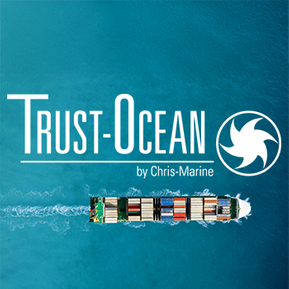The US Public Health Agency got it wrong. The cost of their errors is staggering.
U.S. Agency for Toxic Substances and Disease Registry was established to safeguard the public through the assessment of health risks in America's worst polluted areas. The U.S. Agency for Toxic Substances and Disease Registry (ATSDR) was created to protect the public by assessing health risks at America's most polluted sites.
investigation
It is found to regularly ignore and downplay neighbors' concerns about their health in its reports, and employs practices that even the review board of this company has called "virtually worthless" and "not good."
A review of hundreds agency reports has revealed that in 68% of findings it either declared the communities to be safe or made no determination. At least 20 incidents were found in which the agency disregarded health concerns later confirmed as hazardous by other government researchers or the ATSDR.
Patrick Breysse who headed the agency between 2014 and 2022 said that this is a relatively small number of mistakes.
But the mistakes can be devastating. The ATSDR was responsible for exposing children to high levels of lead, and denying medical benefits to up to one million servicemen and their families after they drank toxic water.
This story was not able to get a response from the ATSDR.
The polluters used faulty agency research to avoid lawsuits, to deny compensation to victims, to criticize opponents and to argue for a delay, reduction or cancellation of cleanups. These are a few examples.
The coal company used an erroneous ATSDR to guide state regulators
Over the years, industrial sites in Birmingham's north have released lead, arsenic, and other pollutants into nearby neighborhoods. The Environmental Protection Agency (EPA) proposed in 2014 to add the area on a list that included the most toxic areas of the United States. Drummond Co., a coal company based in Alabama was one of those affected. Drummond Co., a coal company based in Alabama, was one of the companies affected.
Drummond's attorneys wrote a letter to oppose the recommendation. This letter highlighted a study of industrial areas in the area surrounding Drummond that showed no health risks.
It was then circulated amongst state and federal officials. It was sent by the company to the Governor's Office, who then passed it on to officials from the Alabama Department of Environmental Management. The EPA received it as theirs. According to court documents, the same Drummond attorneys gave state regulators talking point to be used at a state hearing in 2015 about the EPA proposal for the site.
Lance LaFleur was the director at that time. He followed the advice of attorneys while also addressing the health advocate's concerns. LaFleur stated that "we are not prepared to guess what the ATSDR will come up with." LaFleur has not responded to an earlier request for comments.
Charlie Powell, a health activist in the area, stated that the ATSDR's report had angered a majority Black community, which has 20,000 people living near the site. According to the Superfund Center at University of Alabama in Birmingham, the community suffers from high rates of chronic respiratory disease (COPD) and other conditions linked with industrial pollution.
After the report showed that residents yards had dangerously high arsenic levels and lead, two years later the ATSDR reversed its decision. In the new report, it was found that soil contamination in yards close to the site increased cancer risk and lead poisoning for residents. Reports highlighted the dangers to children who are playing in yards.
Drummond won by that time. The neighborhood around the plant of Drummond is entitled to federal funding for the removal of contaminated soil. However, the EPA retracted a proposal which would have held Drummond responsible in part for the cost.
According to the EPA website, it is still negotiating with businesses in order to recover costs for cleanup. The agency stated that protecting the public's health was "mission-critical" in an email statement.
Drummond responded via email to inquiries about the company's actions. The comments were based upon the ATSDR 2013 findings that "soils in the vicinity of the site, with few exceptions did not pose a health hazard for the public." Four years later the corrected ATSDR reports was released.
ATSDR must revisit Marine Base Report after Congressional investigation
According to internal emails that were previously not reported, an environmentalist working for a federal agency offered the opportunity to those who had contaminated the water to change the report.
For years, the Navy and Marines have maintained that residents and workers of Camp Lejeune Marine Corps Base near Jacksonville in North Carolina were not poisoned from drinking chemically-tainted water. Richard Clapp, an epidemiologist, said that a finding of non-hazardous health effects by the federal agency ATSDR would help to clear them from responsibility. Clapp, a former director at Massachusetts Cancer Registry who worked alongside a group former Camp Lejeune workers and residents to promote strong health studies on the base. Clapp stated that any finding of harm caused by water could be detrimental to the reputation of the Navy or Marines, and cost the federal governments billions through compensation claims.
According to a June 6, 1997 letter from Carole Hossom of the ATSDR to Camp Lejeune’s Environmental Management Department, two months prior to the publication of the report by the ATSDR, Hossom invited Marines and Navy to suggest changes "preferably over the phone." According to a Navy internal memo dated July 1997, after the calls the ATSDR "substantially" changed the report. It does not specify the changes, but it notes that at that time the Navy had concerns that the ATSDR draft report relied upon incomplete or inaccurate data. The Marine Corps technically belongs to the Navy.
The was released in August 1997 and dismissed concerns about adult health. It also failed to mention that fuel benzene was found in drinking water, which is a carcinogen. unable to find out why the ATSDR did not consider benzene or what the Navy had discussed.
The agency. According to a report from the 2010 Congressional session, an agency official told Congress that it had lost a file containing supporting documents. Hossom didn't respond to comments.
The ATSDR report was a great help to the leadership of both the Navy and Marine Corps. The report of the agency was used by the Navy and Marine Corps to refute claims that the water contamination caused health issues. The Department of Veterans Affairs refused to pay medical benefits for ex-servicemen who claimed that the water caused them illness, without the ATSDR finding harm.
Jerry Ensminger is a retired Marine and Mike Partain was born at Camp Lejeune. They searched thousands of Navy records and Environmental Protection Agency files and discovered a report from 1984 that indicated benzene in the drinking water on base. In 2009, after criticism by Congress, the news media reported on this story and admitted that they had missed the contamination of drinking water with benzene.
The ATSDR has agreed to review Camp Lejeune under pressure from Congress. North Carolina Senators Richard Burr & Kay Hagan block two Navy senior appointments until Navy agrees to pay $40M for cleanup.
In 2014, the ATSDR published a report that linked the contaminated water in Camp Lejeune with increased mortality rates, cancer, and other diseases such as Parkinson's among those who lived and/or worked on the Marine base.
According to a Navy spokesperson, the Navy has been working on addressing concerns about past exposure to drinking water contaminated at Camp Lejeune. This includes working with federal agencies conducting health studies.
Terrence Hayes, VA's Press Secretary via email, said that the VA did not have a policy of using the 1997 ATSDR flawed report as a basis to deny medical claims for veterans. Hayes stated that the agency continues to learn more about toxic substances and has, as a result, "dramatically increased health benefits and care for Veterans who have been exposed"
Based on discussions with the ATSDR in 2016, the VA decided to offer free medical care to Camp Lejeune Veterans who had one of the eight conditions that were linked to the contaminated drinking water. These included leukemia and various cancers. Families of veterans were reimbursed for medical expenses not covered by insurance.
The ATSDR declined to answer questions in this article. Patrick Breysse said that the military treated ATSDR like a contractor, often putting pressure on the agency. He claimed that the ATSDR had done excellent work, and found serious health issues at the Marine Base.
Denita McCall was diagnosed in 1997 with parathyroid carcinoma, around the time that the agency released its flawed report.
In an email sent to the ATSDR, she said, "I believe that my diagnosis was delayed because doctors from the VA relied upon the ATSDR Public Health Assessment of 1997." The VA Administration denied my benefits claim citing your 1997 Public Health Assessment.
McCall passed away in July 2009, just three months after the ATSDR acknowledged that its 1997 report had been wrong.
70 Families relocated 16 years after ATSDR declared them safe
Since decades, dust clouds have been rising from an industrial facility owned by Norlite in Cohoes (New York), a manufacturer of construction materials. The dust clogged air conditioners and coated homes. Norlite made 12 residents sick, according to a survey.
The ATSDR was contacted for assistance. Local health advocates wrote to the agency in 2003, saying that 14 houses within one mile of the facility had people with cancer, bronchitis or skin rashes. They also said they were suffering from sinus issues, emphysema, and emphysema. Residents had hoped that the agency would urge state and local authorities to order the incinerator at the site, which burns hazardous waste, to cut down on emissions.
In 2005, the ATSDR released a report that concluded there was no damage to the local community. This report was used by Norlite and the former Cohoes mayor John McDonald to dismiss health concerns raised by neighbors. McDonald said that he initially believed ATSDR’s assessment but now believes the agency should come back to Cohoes and do further research.
The ATSDR report was not accepted by the neighbors of Norlite, however it stopped the local effort to get Norlite to reduce emissions. Citizens Halting Risks of Norlite’s Industrial Contaminants, a group that led this effort, has disbanded after the ATSDR announced Norlite to be safe.
Kate Tarbay said, "With this report, we wondered what we should do and where we could go from here," as she co-led CHRONIC, in 2005. We're not rich. "We didn't employ chemists."
In a letter sent to a local paper in 2021, Jeff Beswick wrote that Norlite was not a threat to health. In the letter, Jeff Beswick referred to the ATSDR report that concluded there were no concerns about the health of the community. Beswick has not responded to any recent requests for comments.
David Walker from Columbia University, a geologist semi-retired in 2021 and 16 years after ATSDR published its report decided to examine dust coming from the Norlite plant. Walker, who grew up just two miles away from Norlite, was eager to find out what the microscope revealed. The incinerator particles included superheated stones, fragments of silica and jagged pieces of stone that could tear people's lung. The ATSDR had not conducted an analysis of this kind.
Walker's findings prompted the New York Attorney general and Department of Environmental Conservation to act a year later. In the suit, it was alleged that the company failed to maintain dust control and had violated past laws involving metals and chemicals, such as chromium, arsenic, and dioxins.
Tradebe contests the lawsuit. The company responded to New York's lawsuit by stating that the state relied on standards of health in other states, not New York. Rich Bamberger said that the Norlite plant is currently closed while Tradebe inspects, repairs, and evaluates its operation.
Bamberger stated that state air monitors also recorded dust from other sources, including lawnmowers. Norlite's internal air monitoring found that the dust coming from Norlite "
"The community is not negatively affected by the pollution."
A study from the New York Department of Health in 2023, which did not attribute illnesses to Norlite's plant, was also mentioned by the company. This study mentions an elevated rate of lung cancer in the area, but is not conclusive as to the reason.
The Cohoes Housing Authority has announced that it will relocate 70 families in August 2022 from an adjacent public housing complex. Mark Pascal, the chairman of Cohoes Housing Authority said that he was worried about how Norlite emissions could harm families who lived in this complex.
Pascal: "We couldn't believe that this would change. We had to remove those people."
Bamberger said the Tradebe spokesperson that Norlite began operations after the complex of public housing was constructed and there are no signs that residents were in any danger.
Boeing cites disputed ATSDR Report to counter-push for stricter cleaning
After learning in 1959 that a nuclear experiment had partly melted, the neighbors of an ex-rocket testing and research facility north of Los Angeles demanded health studies. The Santa Susana Field Lab attracted little attention from the public until 1979 when University of California Los Angeles (UCLA) students began to dig into its history.
Boeing, the aerospace giant, bought this property in 1996. Scientific studies were published shortly after.
Santa Susana laboratory workers had a higher risk of death from cancers such as lung, lymph, and blood. Members of the community wanted to find out if they too were at risk.
In response to California legislators, the ATSDR sent a team in Southern California during fall 1999. The team's task was to assess whether there was enough data to evaluate the potential impact of the laboratory on health. More than 250 residents of suburban Los Angeles expressed their concerns to the team as they toured site.
It was recommended by the team that further research be conducted to determine if the Santa Susana site is contributing to the cancer rates and other problems of health in the community. The team concluded that, despite the absence of this information, Santa Susana was not a threat to the community.
Boeing has always been adamant about its safety. Cleanup of the wreckage is the responsibility of the company along with NASA and the Department of Energy.
Boeing's spokesperson, quoted by the Associated Press in a report on the ATSDR Report from November 1999: "It offers reassurance for the community there is no evidence that Santa Susana Field Lab activities are a threat to health."
Advocates and legislators pressed for independent studies of health. ATSDR funded the study, while an independent contractor recruited researchers.
Scientists began to release their findings in 2006.
UCLA Researchers
People living in the vicinity of the former laboratory could have a chronic exposure to contaminants. Lead and arsenic could pose a threat to children in the neighborhood south of this site. Children in a neighborhood just south of the site could be at risk from lead and arsenic.
Researchers at the University of Michigan found that people who lived within two miles of a lab had higher rates of cancers such as thyroid, bladder, and blood than those farther away.
Burt Cooper who worked on the ATSDR team in 1999 said he was not surprised that the ATSDR preliminary studies came to different conclusions. Cooper stated that "the science isn't exact."
Boeing has continued to cite the 1999 ATSDR report. Boeing used its earlier study to contest the UCLA 2006 report. Boeing questioned the UCLA study's use of "essentially" the same information and the ATSDR, but how they "reached different conclusions," as per a
Letter
The company sent the UCLA author's study.
A group of industry advocates cited the ATSDR report from 1999 in 2011 to refute the claims made by an environmental group that a cluster thyroid and bladder tumors surrounded the old lab.
Boeing also referenced the 1999 report when answering questions about a
Story about Santa Susana
In 2022, and an email sent to a health official from the county who had spoken at a 2023 public meeting about the importance of cleaning up the area.
Boeing stated in a press release for this article that, taken together, numerous studies "does not support any linkage between cancer incidences and previous operations at the Santa Susana Field Laboratory."
Questions about Boeing or the Santa Susana Lab were not answered by ATSDR.
(source: Reuters)





